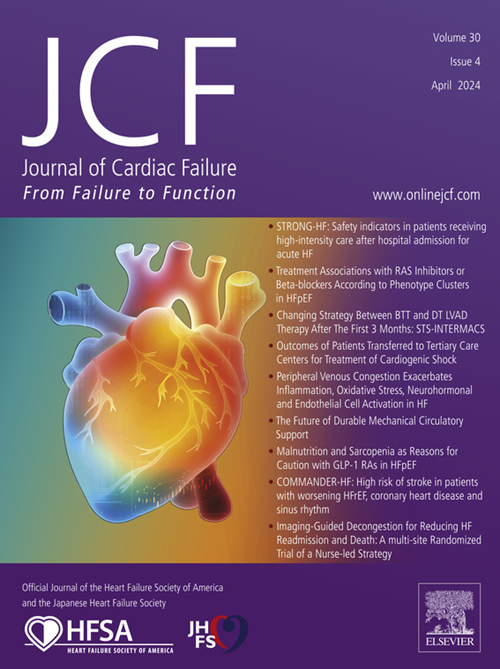Development And Implementation Of An Rv Stress Test To Assess Rv Reserve Pre-lvad
IF 6.7
2区 医学
Q1 CARDIAC & CARDIOVASCULAR SYSTEMS
引用次数: 0
Abstract
Introduction
Right ventricular failure (RVF) remains a leading cause of mortality and morbidity in patients supported with left ventricular assist devices (LVAD). There is significant limitation in predicting early RVF post LVAD utilizing static parameters. Our objective was to evaluate the safety and feasibility of a dynamic evaluation of RV function (RV stress test) prior to HM3 LVAD implantation.
Hypothesis
Assessing dynamic hemodynamic and echocardiographic parameters during RV stress test is safe, and feasible to assess RV reserve prior to LVAD implantation.
Methods
Adult patients evaluated for LVAD implantation at our institution were consented for inclusion in the prospective RV stress test study. The RV stress test consisted of firstly, an infusion of epinephrine titrated to .03 mcg/kg/min (inotropic response). second, sodium nitroprusside titrated to 1.0 mcg/kg/min (vasodilators response). Lastly, a 500 cc bolus of normal saline (volume response). Repeat simultaneous invasive hemodynamics and echo parameters were collected at baseline and then each stage of the RV stress test. INTERMACS defined RV failure was the primary outcome, with adverse stress test outcomes, as secondary outcomes.
Results
A total of 11 patients enrolled in this pilot study. The median age was 58.4, 64% males, 45.5% Ischemic cardiomyopathy. Prior to LVAD implant the median LVEF and LVDD were 14.9% and 6.7cm respectively. The baseline hemodynamics are shown on Table 1. The change on baseline hemodynamics with each of the RV stress steps are shown on Figure 1. The nitroprusside intervention led to significant decreases in hemodynamic markers of preload and afterload, with no changes on hemodynamic markers of RV contractility. The epinephrine group had significant increase in pulmonary artery compliance. Both epinephrine and nitroprusside interventions achieved significant increases in total and Free wall RV strain. There were zero adverse events of hypotension, arrhythmias or pulmonary edema during the stress test.
Conclusions
Dynamic assessment of RV function using inotropes, vasodilators and fluid challenge is safe in end stage HF patients undergoing LVAD implantation. These steps were able to demonstrate variable degrees of RV reserve under different hemodynamic conditions. Further studies are needed to demonstrate the clinical utility of dynamic changes in RV function in prediction of RVF post LVAD implantation.
求助全文
约1分钟内获得全文
求助全文
来源期刊

Journal of Cardiac Failure
医学-心血管系统
CiteScore
7.80
自引率
8.30%
发文量
653
审稿时长
21 days
期刊介绍:
Journal of Cardiac Failure publishes original, peer-reviewed communications of scientific excellence and review articles on clinical research, basic human studies, animal studies, and bench research with potential clinical applications to heart failure - pathogenesis, etiology, epidemiology, pathophysiological mechanisms, assessment, prevention, and treatment.
 求助内容:
求助内容: 应助结果提醒方式:
应助结果提醒方式:


